#4
Manga in Paris 巴黎的日本漫畫世界 巴黎的日本漫画世界
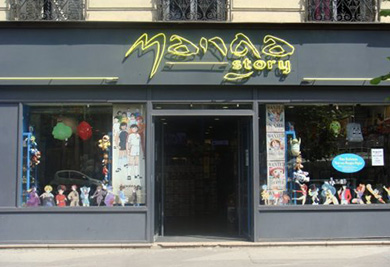
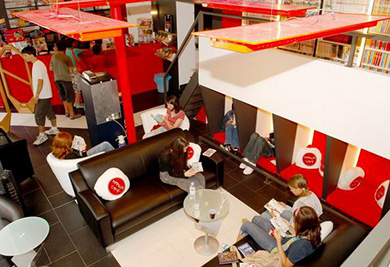
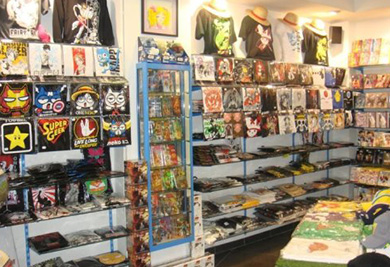
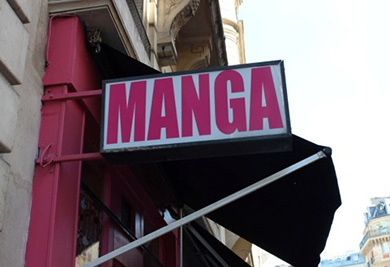
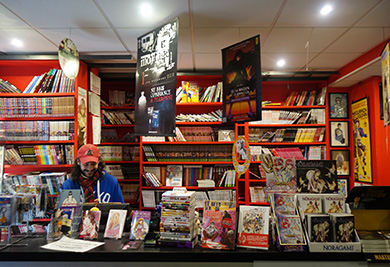 France has a particularly unique relationship with manga, and one which stretches much further than the confines of Paris. For the last 10 years, tens of thousands of volumes have been sold across France, making it no less than the second biggest market for manga in the world after Japan. Japanese culture is, clearly, here to stay, with all of France's major cities boasting specialty manga shops.
France has a particularly unique relationship with manga, and one which stretches much further than the confines of Paris. For the last 10 years, tens of thousands of volumes have been sold across France, making it no less than the second biggest market for manga in the world after Japan. Japanese culture is, clearly, here to stay, with all of France's major cities boasting specialty manga shops.
In Paris, there are a dozen or so scattered throughout the 5th and 11th arrondissements (a swish Left Bank area with a hefty literary heritage, and a trendier Right Bank neighbourhood). You'll find boutiques with names like Little Tokyo, Hayake Shop, Manga Toys and Manga Space – and that's just the specialists, as most general bookshops have a dedicated manga section. There's even a Manga Café near Paris's national library (an adaptation of the Japanese concept of 'manga kissa'), which opened in 2010 and is the biggest library of mangas in France with more than 10,000 volumes, which can be consulted for €3 an hour while fuelling on coffee or bentos. And for the last 15 years, Paris has welcomed two major events for fans of manga and Japanese pop culture – the Japan Expo in July, and the Salon Paris Manga in February.
If manga represents more than a third of comic book sales in France today, its popularity abroad didn't happen easily. In 1983, the famous comic book publishers Les Humanoïdes Associés decided to start distributing Japanese works, starting with the excellent 'Barefoot Gen' by Keiji Nakazawa, but the project bombed. Manga had to wait for a new generation of readers with tastes beyond the Franco-Belgian Tintin tradition – a generation that came of age at the beginning of the ’90s thanks to the influence of television. Toei Animation films were shown on French television starting in 1987: 'Dragon Ball', 'Saint Seiya' and the very controversial 'Fist of the North Star', which started a tense debate in France, with a strong anti-manga movement building in the media (particularly the cultural journal Télérama) and politics. Animations aimed at children were even censored.
Despite this, the public began to take an interest in the aesthetics and the often sombre style of manga. In 1990, the publication of the amazing and complex 'Akira' by Katsuhiro Ōtomo was the first stage in the success of manga in France – and in 1993, 'Dragon Ball' arrived on the city's shelves, and the market started to explode – as did sales of videogame consoles by Japanese brands Nintendo and Sega.
The beginning of the 2000s brought the golden age of manga in France, with the publication of series like 'One Piece', 'Naruto', 'Hunter X Hunter', 'Monster' and 'Bleach'. The proof that the genre had turned a corner came in 2003 when 'NonNonBâ' by Shigeru Mizuki (edited by the independent publisher Cornélius) won a prize for the best comic at Paris's annual comics festival Angoulême. And in 2014, Katsuhiro Ōtomo won the jury's grand prize for his lifetime's work – a most prestigious accolade from the most important event in international comics in France. There's even talk, now, of founding a French school for 'mangaka' comic artists.
Although the manga market in France has risked saturation since around 2010, manga culture in France has found new élan thanks to the Internet, with a new generation of fans (half of all manga in France is read by 11-14 year olds) – huge numbers of sites and forums dedicated to Japanese pop culture and its by-products, be they videogames, cosplay or J-Pop. And, of course, immumerable mangas.
When you’ve flipped through every translated comic available, dressed up as your favourite character and thoroughly explored the Paris manga scene, it’s time to take the plunge into Tokyo’s infinitely deep otaku world…
Nico Nico Honsha
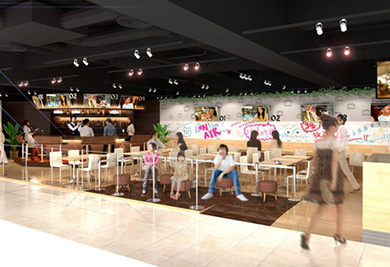 The headquarters of popular video sharing service Nico Nico Douga serves as a shrine to the deliciously geeky culture that's sprung up thanks to the site. Housing a theme café, an official shop and a pro-grade studio, this spot is a must-see for otaku from all over the world.
The headquarters of popular video sharing service Nico Nico Douga serves as a shrine to the deliciously geeky culture that's sprung up thanks to the site. Housing a theme café, an official shop and a pro-grade studio, this spot is a must-see for otaku from all over the world.
Link: Nico Nico Honsha
Tokyo's Tokyo
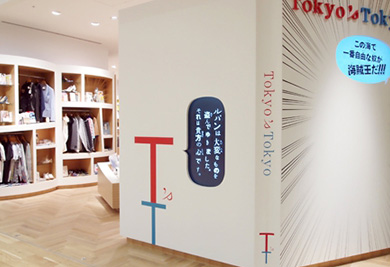 If you feel like you just walked into the pages of a comic book, don't worry: you're supposed to. Design-savvy gift shop Tokyo's Tokyo looks to the world of anime and manga for inspiration, stocking hip toys, clothes and accessories with a cartoony twist. Even the shop interior resembles a manga layout.
If you feel like you just walked into the pages of a comic book, don't worry: you're supposed to. Design-savvy gift shop Tokyo's Tokyo looks to the world of anime and manga for inspiration, stocking hip toys, clothes and accessories with a cartoony twist. Even the shop interior resembles a manga layout.
Link: Tokyo's Tokyo
Toei Kyoto Studio Park
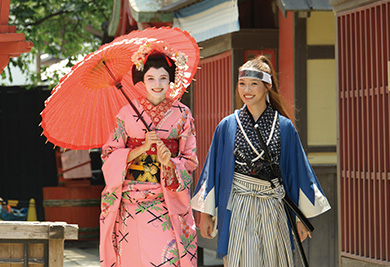 At Kyoto’s Toei Uzumasa Eigamura, professional make-up artists, hairstylists and costume designers are on hand to help you transform into a hero or heroine of a Japanese period drama. Think of it as cosplay taken to the extreme.
Link: #51 Dress as a samurai-film hero (or heroine)
At Kyoto’s Toei Uzumasa Eigamura, professional make-up artists, hairstylists and costume designers are on hand to help you transform into a hero or heroine of a Japanese period drama. Think of it as cosplay taken to the extreme.
Link: #51 Dress as a samurai-film hero (or heroine)
Link: 051 Dress as a samurai-film hero (or heroine)




 法國跟日本漫畫有種尤為獨特的關係,其影響力甚至遠遠擴及到巴黎之外。在過去的10年裡,成千上萬的日本漫畫在法國賣出,讓法國成為全世界僅次於日本的第二大漫畫市場。由法國各大城市可見的特色日本漫畫商店可知,日本文化顯然已經在此紮根。
法國跟日本漫畫有種尤為獨特的關係,其影響力甚至遠遠擴及到巴黎之外。在過去的10年裡,成千上萬的日本漫畫在法國賣出,讓法國成為全世界僅次於日本的第二大漫畫市場。由法國各大城市可見的特色日本漫畫商店可知,日本文化顯然已經在此紮根。
在巴黎的第五區跟第十一區分佈着十幾間漫畫店(第五區是指富裕的左岸地區、那裡有許多豐富的文學遺產,第十一區是指時髦的右岸地區)。Little Tokyo、Hayake Shop、Manga Toys、Manga Space等全部都是漫畫專門店,而大部分一般的書店都設有日本漫畫的專區。在巴黎國立圖書館的附近甚至有一間叫Manga Café的漫畫咖啡館(引用日本漫畫喫茶店的概念所建)。這家店在2010年開始營業的咖啡館是法國最大的日本漫畫圖書館,超過一萬本收藏,收費每個小時3歐元,還有咖啡跟便當供應。而過去的十五年,巴黎為日本漫畫與日本流行文化的熱愛者舉辦兩次大型的活動,包括7月的日本博覽會和2月的日本動漫展。
日本漫畫佔了當今法國漫畫書銷量的三分之一,而這樣的普及實在得之不易。1983年,著名的漫畫出版商Les Humanoïdes Associés決定開始發行日本作品,首先計劃推出的是中澤啟治的著作『赤足小子』,但並沒有成功。日本漫畫要等新一代讀者的出現;在90年代長大的這一帶受電視的影響,終於跳脫了法式比利時漫畫『丁丁歷險記』式的傳統。從1987年,東映動畫公司製作的動畫開始在法國電視上播放,包括『七龍珠』、『聖鬥士星矢』,還有備受爭議性的『北斗神拳』等,在法國產生了激烈的爭議,還在媒體界(尤其是文化週刊『電視全覽』)及政治界上掀起了一場強大的反日本漫畫運動。針對孩童的動漫甚至遭到審查控管。
儘管如此,大眾開始對日本漫畫的美學與多為憂鬱的風格開始感興趣。從1990年開始,大友克洋神奇且複雜的『阿基拉』的發行為日本漫畫在法國邁開了成功的第一步。在1993年,『七龍珠』在巴黎上架銷售,市場開始迅速擴張,日本電子遊戲機產品品牌任天堂跟世嘉的的銷量不斷增加。
2000年起,隨著『海賊王』、『火影忍者』、『獵人』、『怪物』、『死神』等系列漫畫的發行,日本漫畫在法國進入黃金時代。在2003年,這種類型的作品時來運轉證明就是水木茂『鬼婆婆與孩子王』(由康尼留斯出版社編輯)贏得巴黎一年一度的法國安古蘭國際漫畫節最佳漫畫獎。在2014年,大友克洋獲頒終身成就獎,是在法國國際漫畫界的最高榮譽。現在甚至有人在討論要在法國計劃成立一個培養漫畫家的學校。
雖然法國的日本漫畫從2010年開始有飽和的隱憂,但是利用互聯網,法國的日本漫畫文化找到了新一世代的粉絲(在法國的漫畫讀者中有一半的是11-14歲的青少年)。大量網站與論壇專門提供日本流行文化與其副產品,包括電子遊樂器、角色扮演、或者日本流行音樂。當然,還有不勝枚舉的日本漫畫。
如果你已經讀遍所有的日本漫畫譯本、試過打扮成你最喜歡的角色,並徹底探索過巴黎的日本漫畫界,那麼是時候縱身跳進東京御宅族世界神秘無底的深淵了…
Niconico總店
 熱門視頻分享服務「Niconico動畫」網站掀起宅文化熱潮,而總店則成了宅男宅女的朝聖之地。設有主題咖啡館、官方商店和專業級工作室,是世界各地御宅族的必訪勝地。
熱門視頻分享服務「Niconico動畫」網站掀起宅文化熱潮,而總店則成了宅男宅女的朝聖之地。設有主題咖啡館、官方商店和專業級工作室,是世界各地御宅族的必訪勝地。
連結: Niconico總店
Tokyo's Tokyo
 如果你覺得自己好像走進了一本漫畫書中,別擔心:這是對的。設計精美的禮品店Tokyo's Tokyo從動畫和漫畫世界汲取靈感,以帶有卡通風格的方式陳列時髦玩具、服裝和飾品。就連店內裝潢也採用了漫畫的版面設計。
如果你覺得自己好像走進了一本漫畫書中,別擔心:這是對的。設計精美的禮品店Tokyo's Tokyo從動畫和漫畫世界汲取靈感,以帶有卡通風格的方式陳列時髦玩具、服裝和飾品。就連店內裝潢也採用了漫畫的版面設計。
連結: Tokyo's Tokyo
東映太秦電影村
 在京都的東映太秦電影村,有專業化妝師、髮型師和古裝設計師在場協助你變身成為日本古裝劇中的男主角或女主角,讓你體驗極限化的cosplay(角色扮演)。
在京都的東映太秦電影村,有專業化妝師、髮型師和古裝設計師在場協助你變身成為日本古裝劇中的男主角或女主角,讓你體驗極限化的cosplay(角色扮演)。
連結: #051 化身武士片中的英雄




 法国跟日本漫画有种尤为独特的关系,其影响力甚至远远扩及到巴黎之外。在过去的10年裡,成千上万的日本漫画在法国卖出,让法国成为全世界仅次于日本的第二大漫画市场。由法国各大城市可见的特色日本漫画商店可知,日本文化显然已经在此扎根。
法国跟日本漫画有种尤为独特的关系,其影响力甚至远远扩及到巴黎之外。在过去的10年裡,成千上万的日本漫画在法国卖出,让法国成为全世界仅次于日本的第二大漫画市场。由法国各大城市可见的特色日本漫画商店可知,日本文化显然已经在此扎根。
在巴黎的第五区跟第十一区分佈着十几间漫画店(第五区是指富裕的左岸地区、那裡有许多丰富的文学遗产,第十一区是指时髦的右岸地区)。Little Tokyo、Hayake Shop、Manga Toys、Manga Space等全部都是漫画专门店,而大部分一般的书店都设有日本漫画的专区。在巴黎国立图书馆的附近甚至有一间叫Manga Café的漫画咖啡厅(引用日本漫画喫茶店的概念所建)。这家店在2010年开始营业的咖啡馆是法国最大的日本漫画图书馆,超过一万本收藏,收费每个小时3欧元,还有咖啡跟便当供应。而过去的十五年,巴黎为日本漫画与日本流行文化的热爱者举办两次大型的活动,包括7月的日本博览会和2月的日本动漫展。
日本漫画佔了当今法国漫画书销量的三分之一,而这样的普及实在得之不易。1983年,著名的漫画出版商Les Humanoïdes Associés决定开始发行日本作品,首先计划推出的是中泽启治的著作『赤足小子』,但并没有成功。日本漫画要等新一代读者的出现;在90年代长大的这一带受电视的影响,终于跳脱了法式比利时漫画『丁丁历险记』式的传统。从1987年,东映动画公司制作的动画开始在法国电视上播放,包括『七龙珠』、『圣斗士星矢』,还有备受争议性的『北斗神拳』等,在法国产生了激烈的争议,还在媒体界(尤其是文化週刊『电视全览』)及政治界上掀起了一场强大的反日本漫画运动。针对孩童的动漫甚至遭到审查控管。
儘管如此,大众开始对日本漫画的美学与多为忧郁的风格开始感兴趣。从1990年开始,大友克洋神奇且复杂的『阿基拉』的发行为日本漫画在法国迈开了成功的第一步。在1993年,『七龙珠』在巴黎上架销售,市场开始迅速扩张,日本电子游戏机产品品牌任天堂跟世嘉的的销量不断增加。
2000年起,随着『海贼王』、『火影忍者』、『猎人』、『怪物』、『死神』等系列漫画的发行,日本漫画在法国进入黄金时代。在2003年,这种类型的作品时来运转证明就是水木茂『鬼婆婆与孩子王』(由康尼留斯出版社编辑)赢得巴黎一年一度的法国安古兰国际漫画节最佳漫画奖。在2014年,大友克洋获颁终身成就奖,是在法国国际漫画界的最高荣誉。现在甚至有人在讨论要在法国计划成立一个培养漫画家的学校。
虽然法国的日本漫画从2010年开始有饱和的隐忧,但是利用互联网,法国的日本漫画文化找到了新一世代的粉丝(在法国的漫画读者中有一半的是11-14岁的青少年)。大量网站与论坛专门提供日本流行文化与其副产品,包括视频游戏、角色扮演、或者日本流行音乐。当然,还有不胜枚举的日本漫画。
如果你已经读遍所有的日本漫画译本、试过打扮成你最喜欢的角色,并彻底探索过巴黎的日本漫画界,那麽是时候纵身跳进东京御宅族世界神秘无底的深渊了…
Niconico总店
 热门视频共享服务‘Niconico动画’网站掀起宅文化热潮,而总店则成了宅男宅女的朝圣之地。设有主题咖啡厅、官方商店和专业级工作室,是世界各地御宅族的必访胜地。
热门视频共享服务‘Niconico动画’网站掀起宅文化热潮,而总店则成了宅男宅女的朝圣之地。设有主题咖啡厅、官方商店和专业级工作室,是世界各地御宅族的必访胜地。
连结: Niconico总店
Tokyo’s Tokyo
 如果你觉得自己好像走进了一本漫画书中,别担心:这是对的。设计精美的礼品店Tokyo's Tokyo从动画和漫画世界汲取灵感,以带有卡通风格的方式陈列时髦玩具、服装和饰品。就连店内装潢也採用了漫画的版面设计。
如果你觉得自己好像走进了一本漫画书中,别担心:这是对的。设计精美的礼品店Tokyo's Tokyo从动画和漫画世界汲取灵感,以带有卡通风格的方式陈列时髦玩具、服装和饰品。就连店内装潢也採用了漫画的版面设计。
连结: Tokyo’s Tokyo
东映太秦电影村
 在京都的东映太秦电影村,有专业化妆师、发型师和古装设计师在场协助你变身成为日本古装剧中的男主角或女主角,让你体验极限化的cosplay(角色扮演)。
在京都的东映太秦电影村,有专业化妆师、发型师和古装设计师在场协助你变身成为日本古装剧中的男主角或女主角,让你体验极限化的cosplay(角色扮演)。
连结: #051 化身武士片中的英雄

Alexandre Prouvèze and Time Out Paris Editors Alexandre Prouvèze與Time Out巴黎編輯部 Alexandre Prouvèze与Time Out巴黎编辑部
Time Out Paris delivers engaging features, local listings and critical reviews to active and informed residents and visitors in Paris, in both French and English. Sometimes irreverent but always intelligent, Time Out Paris provides passionate coverage of music, film, theatre, dance, shopping, dining and more. Visit us at http://www.timeout.com/paris/. Alexandre Prouvèze, who contributed this article, is our Film editor. 《Time Out巴黎》為居民及遊客提供當地名產、引人入勝的巴黎特色 等各種實用的信息,支持英語和法語兩種語言。有時不循規蹈矩,但時刻保持睿智,其內容涵蓋音樂、電影、戲劇、舞蹈、購物、餐飲等等。詳情請參照:http://www.timeout.com/paris/寫這篇文章的是Alexandre Prouvèze,Time Out巴黎的影片剪輯師。 《Time Out巴黎》为居民及游客提供当地名产、引人入胜的巴黎特色 等各种实用的信息,支持英语和法语两种语言。有时不循规蹈矩,但时刻保持睿智,其内容涵盖音乐、电影、戏剧、舞蹈、购物、餐饮等等。详情请参照:http://www.timeout.com/paris/ 写这篇文章的是Alexandre Prouvèze,Time Out巴黎的影片剪辑师。